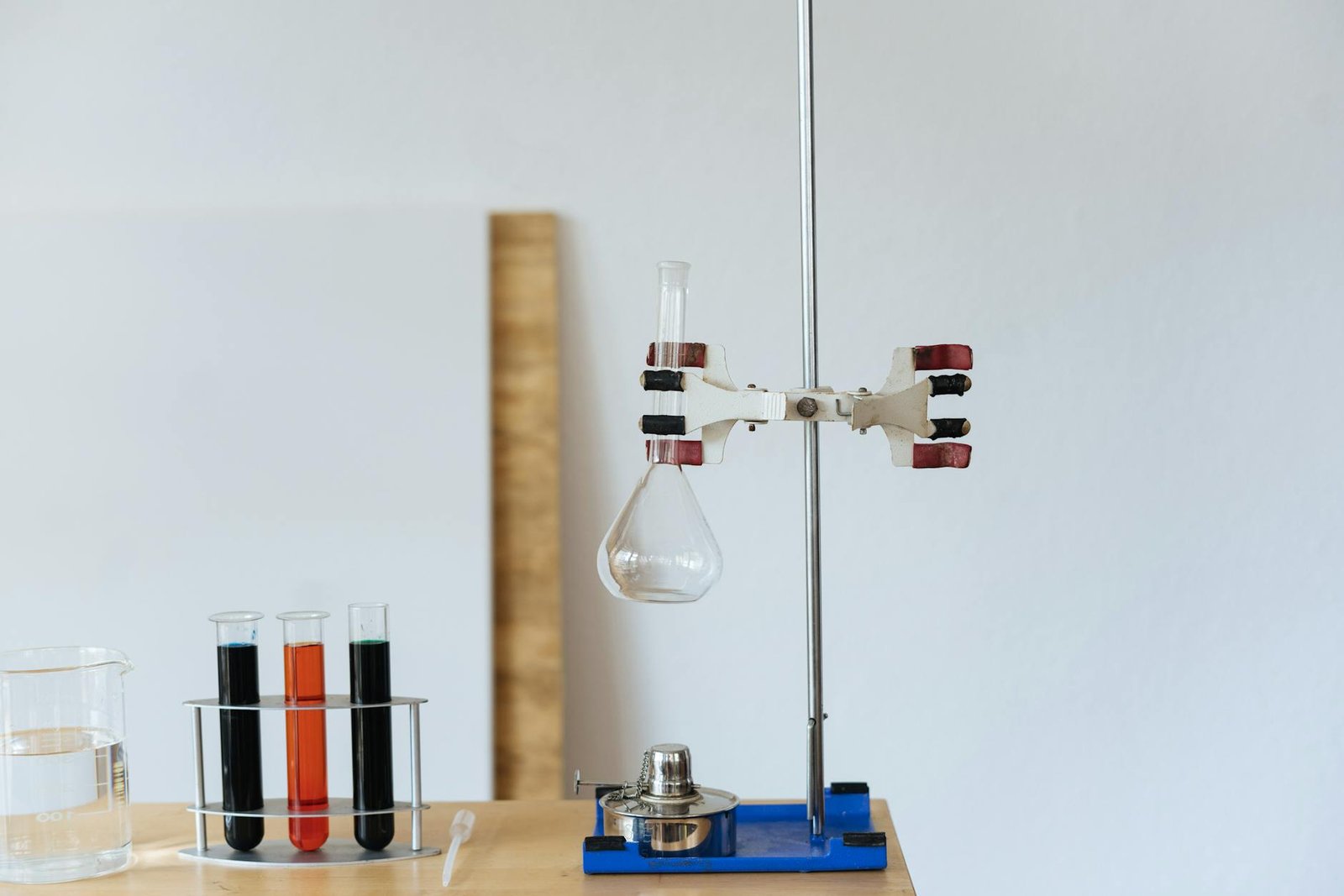Understanding Wagner Fineness
Wagner Fineness is a term often used in the construction world. It refers to the degree of particle size in materials such as cement, creating a measure of quality.
In construction, this concept is key.
The finer the particles are, the more reactive they can be, drastically affecting the strength of the final structure. The smoothness and durability of a surface also depend on the particles’ fineness.
Understanding Wagner Fineness helps lead to sturdier buildings and foundations.
Let’s learn a bit more.

Table of Contents
The Wagner Turbidity Method in Construction
The Wagner Turbidity Method, not to be confused with Wagner’s method for analyzing patterns in geology, is a crucial concept in construction and environmental management.
Defining Wagner Turbidity Method
The Wagner Turbidity Method is a technique used in diagnosing and gauging the clarity or cloudiness of a water source.
This method is named after the scientist who developed it, L.A. Wagner, to estimate the surface area of one gram of cement. Technically, it is a quantitative assessment of suspended particles in water.
The fundamental principle in this method is that more particles in the water can cause higher turbidity levels, which are generally deemed unsafe.
Brief Overview of Turbidity
Turbidity, in general, is a parameter to measure the water’s transparency.
It is an essential parameter used in water quality testing and is a significant indicator of the level of pollutants or suspended solids in the water. It can be used as a marker for various types of water, including drinking, surface, waste, and heavy industrial water.
Applications of Wagner Turbidity Method in Construction
This scientific method plays an important role in understanding the environmental impact of a construction project.
- Evaluating runoff water
- Testing drinking water sources
- Assessing water displacement during excavation
- Used as a quality assay in concrete and asphalt production
How The Wagner Turbidity Method is Measured
Turbidity is typically measured with a tool known as a turbidimeter or turbidity meter. The meter works by projecting a light source into the water sample and subsequently measuring the amount of light that is scattered by the suspended particles in the water.
When the suspended particles in the water increase, more light will be scattered, and thus, the water will appear to be more turbid.
The Wagner method expresses turbidity as Nephelometric Turbidity Units (NTU). This unit of measurement is standardized and accepted worldwide.
Importance of Wagner Turbidity Method in Construction Industry
This method is of significant importance as it aids in monitoring the potential environmental impact of construction projects.
Ensuring the quality of water bodies near a construction site can protect aquatic ecosystems. By keeping a keen eye on the turbidity levels within the job site, constructors can prevent harmful spillovers into the public water systems.
It becomes essential to comprehend the Wagner Turbidity Method’s instrumental role in ensuring compliance with regulations and reducing environmental risks in the construction industry. The method underscores the sector’s responsibility towards managing water resources while striving for more sustainable building practices.
Note: It is crucial that construction projects follow all necessary regulatory protocols and invest in periodic water quality testing to prevent adverse environmental impacts.

Comprehending the Fineness of Cement
Similar to the significance of the Wagner Turbidity Method in deciphering water quality, the concept of cement fineness holds a similar place in determining the quality of cement in construction.
What is the Fineness of Cement?
The fineness of cement refers to the particle size distribution of cement or, in more precise terms, the surface area covered by the cement particles per unit weight. The degree of fineness of cement directly impacts crucial aspects such as the rate of hydration, setting time, strength development, and overall performance of cement in concrete.
Why is Cement Fineness Important?
Just like how the Wagner Turbidity Method is vital for observing and managing water quality, cement fineness stands crucial for monitoring the performance and quality of cement. Here are some reasons why:
- Better Heat of Hydration: Cement with higher fineness tends to have greater heat of hydration. This increased heat can lead to the quicker setting of concrete, which can be essential when working under timed conditions.
- Strength Development: Finer cement particles lead to a higher rate of hydration resulting in faster strength development.
- Improved Workability: Finer cement has better workability and can mix more uniformly with aggregate, leading to improved concrete properties.
- Durability: Enhanced cement fineness can enhance concrete’s resistance to various environmental conditions, improving its overall durability.
Alternative Methods of Measuring Cement Fineness
Another way to measure the fineness of cement is by the ‘Blaine air-permeability test‘ method.
In this test, air flow from a defined pressure is passed through a prepared bed of cement and the time taken for a certain quantity of air to pass through the bed is noted. This time, coupled with the specific dimensions of the bed, allows us to calculate the specific surface area of the cement, giving a measure of its fineness.
Another method is the Sieve Test, where cement grains pass through a standard sieve and the retained weight percentage on the sieve indicates the coarseness of the sample
Fineness Limitations
Just as higher turbidity levels pertain to water quality issues in the Wagner Turbidity Method, unnecessarily fine cement also brings its own set of challenges. Though it can speed up the rate of hydration and workability, it can lead to the problem of flash setting (rapid setting), making it difficult to use in practical conditions. Moreover, more finely ground cement also tends to have more dust, which can cause respiratory issues among workers and harm the environment.
Paving the Way towards Efficient Construction Practices
Understanding and managing the quality of essential materials, such as cement and water, in construction is instrumental in driving efficient, sustainable, and safe construction practices.
Just like the Wagner Turbidity testing method, controlling cement fineness also contributes to this noble pursuit. Thus, as a construction professional, undertaking these protocols helps ensure the quality and integrity of the structures being built, their environmental compatibility, and compatibility with workers’ safety norms.
Note: Make sure your construction activities comply with local building codes and consider regular quality testing of materials to ensure construction quality and safety.

The Blaine Fineness Value in Cement Fineness Test
Increased fineness of cement, often measured via the Blaine fineness test or Wagner fineness method, indicates finer particles and thus, larger surface area for the cement mix. Understanding this value is crucial for professionals working in construction management, cement production, or concrete mixing operations.
Understanding the Blaine Fineness Value
Blaine Fineness is a characteristic of cement that provides a measure for cement particle size. A higher Blaine fineness value indicates that the cement particles are more fine or small. As a result, the surface area available per unit weight of cement is greater. This relation between the fineness and the surface area of cement plays a crucial role in the speed of hydration, rate of setting, and ultimately, the strength of the cement.
What does Higher Blaine Fineness Indicate?
Cement with a higher fineness (greater Blaine value) has several implications:
- Faster Hydration: Finer particles have a larger surface area, leading to a higher rate of hydration as more particle surfaces are available to react with water.
- Quicker Setting Time: Higher rate of hydration means that the cement will set quicker. It’s often used when quick setting of concrete is desirable.
- Increased Strength: Due to the enhanced rate of hydration, the development of strength can be faster. This strength development is critical during the early stages of setting.
- Improved Workability: Finer cement gets distributed more evenly, leading to improved workability of the concrete mix.
Impact on Cement and Concrete Performance
Though these benefits may encourage the use of cement with high Blaine fineness value in construction, it’s essential to note that too high a value can also present challenges:
- Rapid Setting: While faster setting times can be beneficial, extremely high Blaine values can lead to flash setting. This is when the cement sets too quickly before it can be appropriately applied, causing management difficulties on site.
- Health and Environmental Risks: As the cement is more finely ground, it may lead to increased dust production. This can pose potential respiratory issues for construction workers and harm the environment.
- Increased Costs: The process of grinding cement to achieve higher Blaine values can also lead to increased energy consumption, leading to higher production costs.
Balancing Blaine Fineness for Optimal Performance
Given these considerations, it’s crucial to balance the Blaine value in order to achieve optimal performance.
This involves considering the specific requirements of the construction project, local environmental regulations, worker safety, and budget constraints. Information on Blaine fineness is critical in making educated decisions about cement composition and can drive efficiency in the construction process.
Note: Always ensure that the cement used complies with local building regulations and adhere to best practices for worker safety and environmental protection.

Wrapping Up Our Cement Talk
In our journey into the realm of construction and environmental management, we’ve found that the Wagner Turbidity Method is far more than a mere scientific jargon.
It serves as our sharper lens into the impact of construction activities on surrounding water bodies, acting as a guide into designing environmentally sensitive projects.
The Wagner method offers a quantitative understanding, transforming murky waters into transparent indicators of environmental health.
From our perspective, applying this method extends beyond simply adhering to regulations – it also contributes to environmental stewardship and paves the path towards sustainable construction. Applying these learnings enables us to be proactive, predicting and mitigating potential hazards before they happen.
In essence, understanding and utilizing the Wagner Turbidity Method is instrumental in transforming the construction industry. With each turbidity test, we take a decisive step away from adverse impacts and make our stride towards environmental equilibrium and responsible construction.






